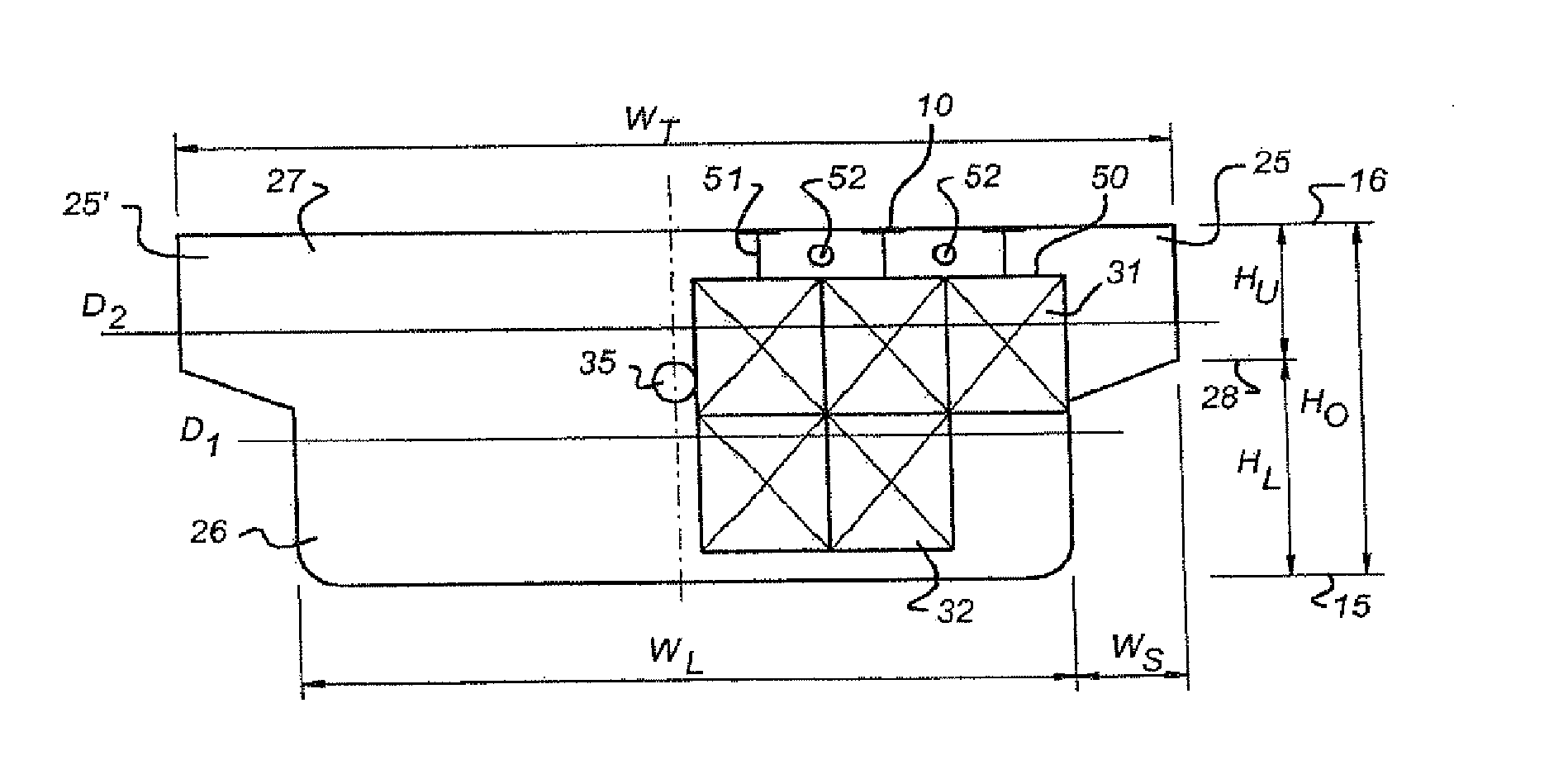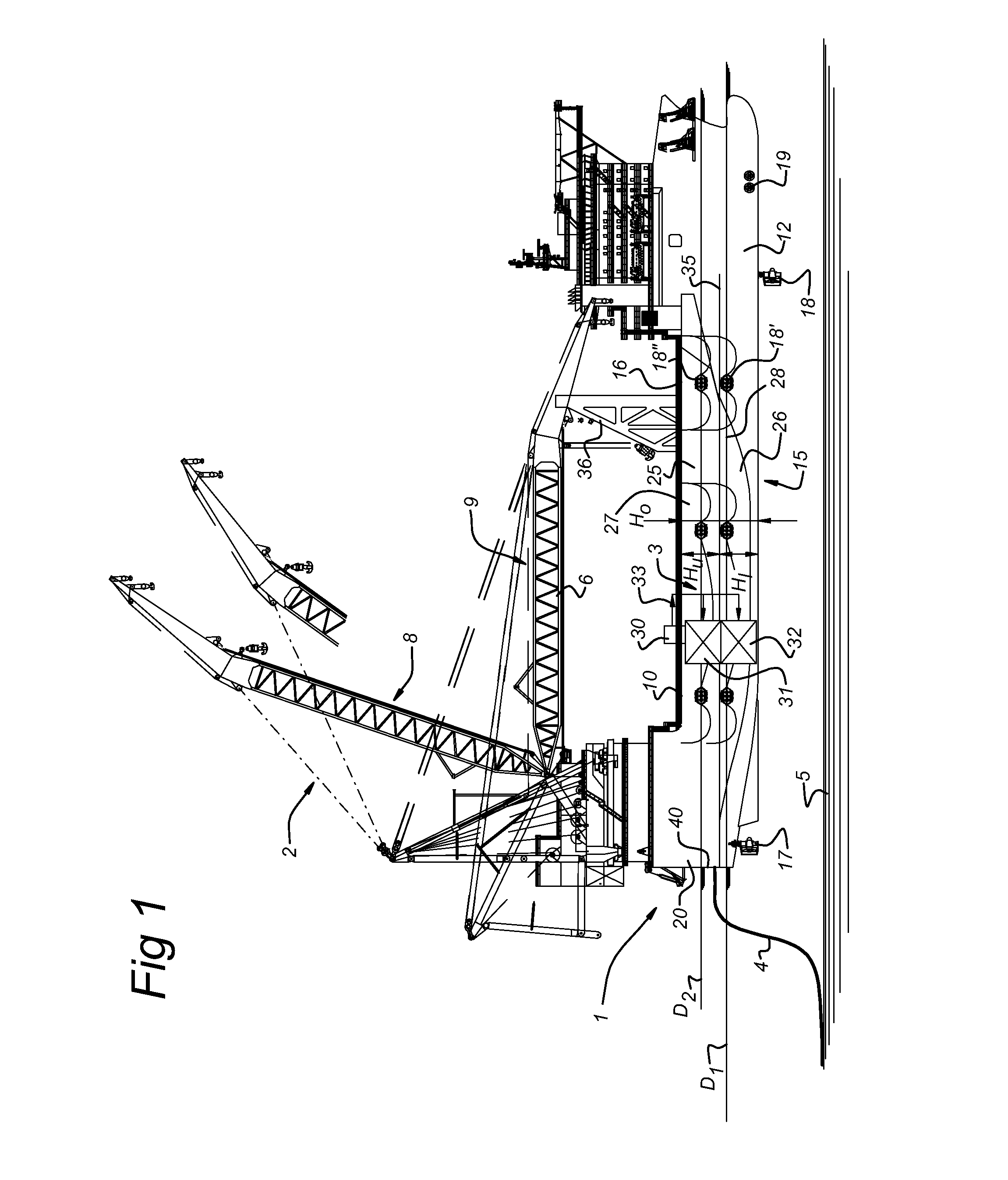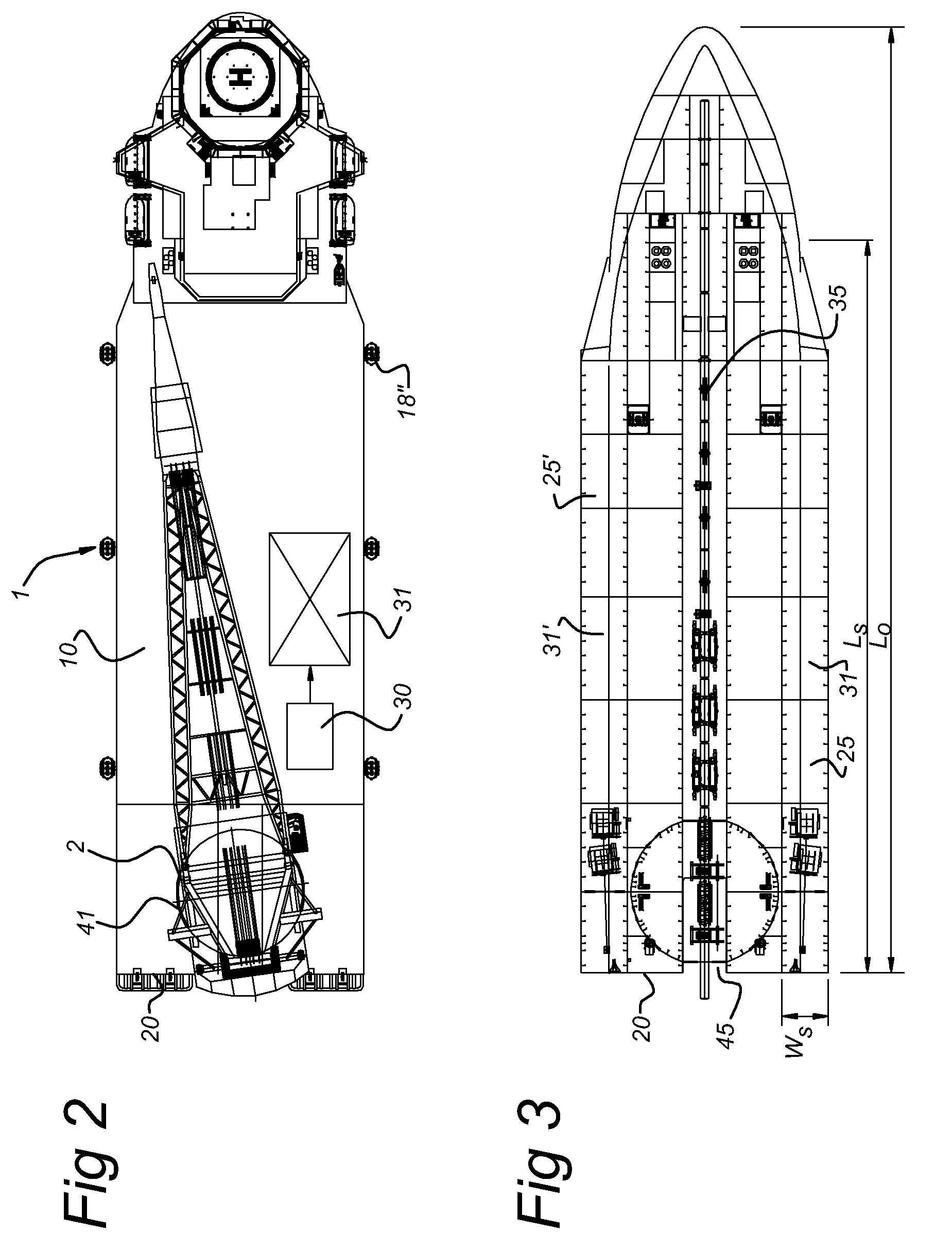Dual draft crane vessel
a crane and crane technology, applied in the field of vessels, can solve the problems of undesired roll motion of vessels and barges, affecting the stability of vessels, so as to reduce the roll motion, improve the stability, and reduce the stiffness and stability
- Summary
- Abstract
- Description
- Claims
- Application Information
AI Technical Summary
Benefits of technology
Problems solved by technology
Method used
Image
Examples
Embodiment Construction
[0023]FIG. 1 shows a lifting and pipe-lay multipurpose vessel 1 having a crane 2 on deck and a firing line 3 for laying of a pipe or cable 4 onto the seabed 5. The arm 6 of the crane 2 can be in a lifting position 8, in which is up righted or can be in the transit position 9, in which it extends generally parallel to the deck 10 of the vessel.
[0024]The hull 12 of the vessel is of a substantially closed surface. With “closed surface” is intended that the hull does not have a columnar structure piercing the waterline, but has as a water line a closed contour. The hull 12 has a relatively narrow lower section 26 of height H1 and a relatively wide top section 27 of height Hu. The wide top section is formed by side extensions 25 extending from a widening level 28 up to deck level 16. The total height of vessel 1 between keel level 15 and deck level 16 is indicated as H0.
[0025]At keel level 15, the vessel is at the stem 20 provided with thrusters 17 for propulsion and with thrusters 18 an...
PUM
 Login to View More
Login to View More Abstract
Description
Claims
Application Information
 Login to View More
Login to View More - R&D
- Intellectual Property
- Life Sciences
- Materials
- Tech Scout
- Unparalleled Data Quality
- Higher Quality Content
- 60% Fewer Hallucinations
Browse by: Latest US Patents, China's latest patents, Technical Efficacy Thesaurus, Application Domain, Technology Topic, Popular Technical Reports.
© 2025 PatSnap. All rights reserved.Legal|Privacy policy|Modern Slavery Act Transparency Statement|Sitemap|About US| Contact US: help@patsnap.com



